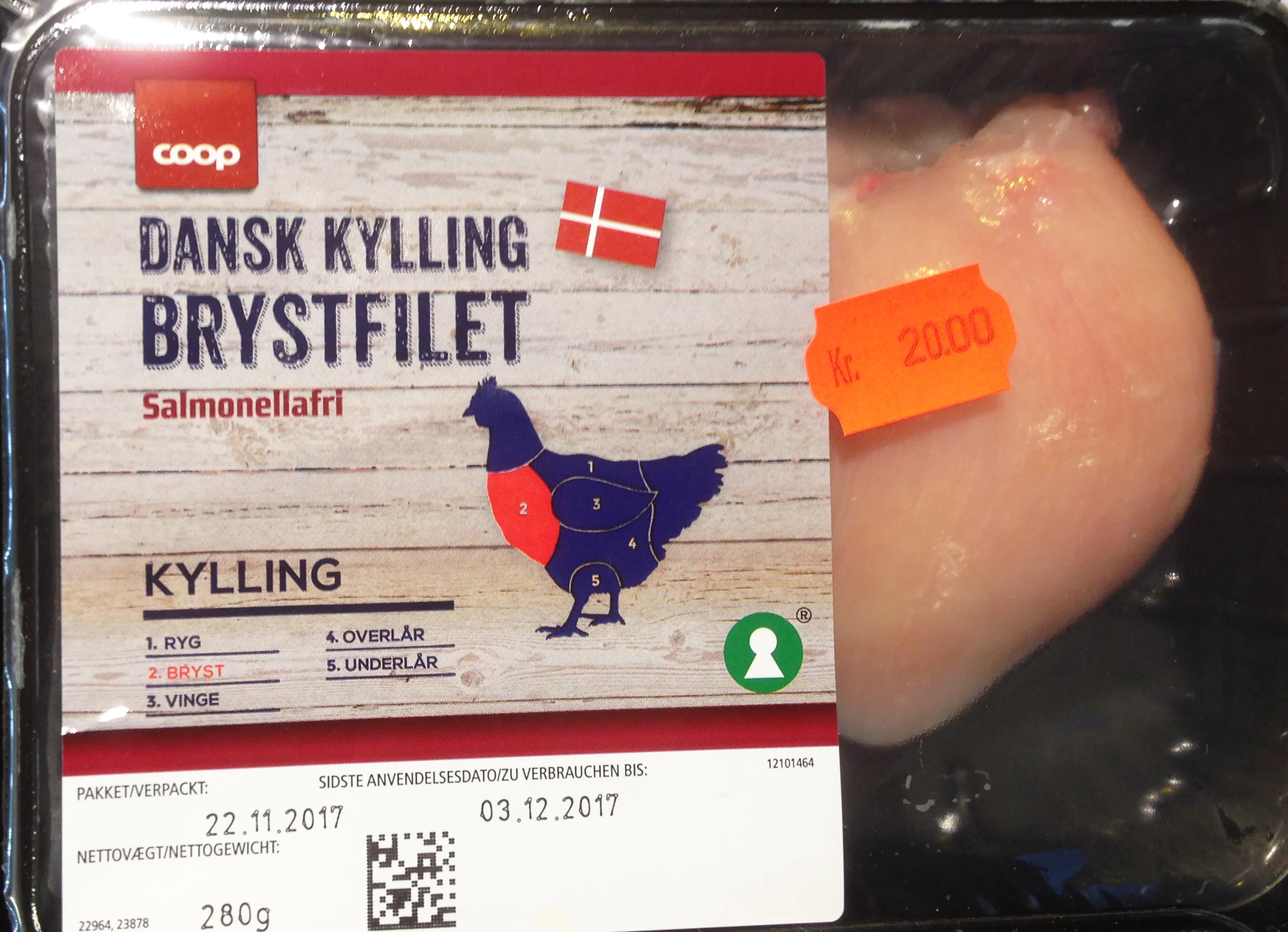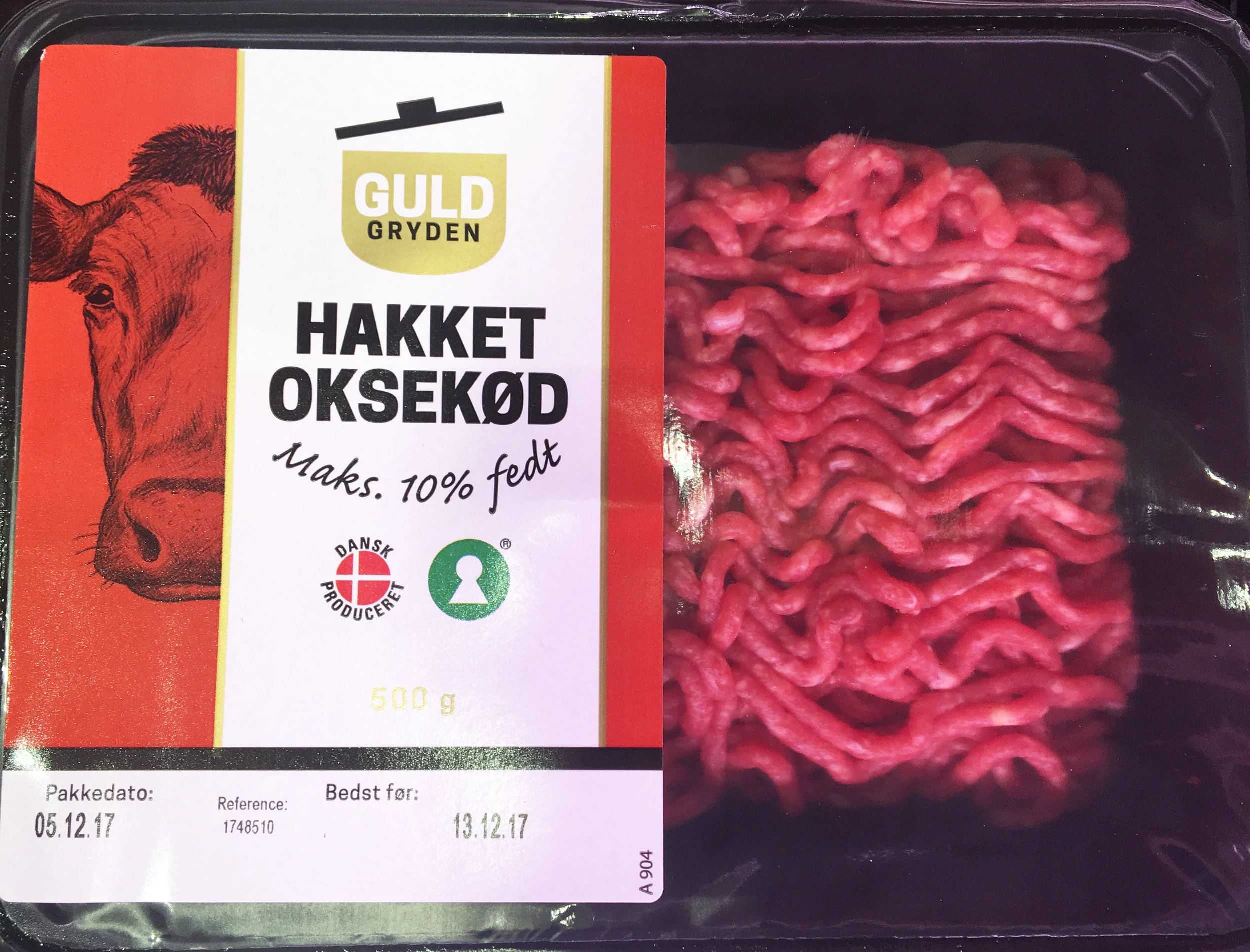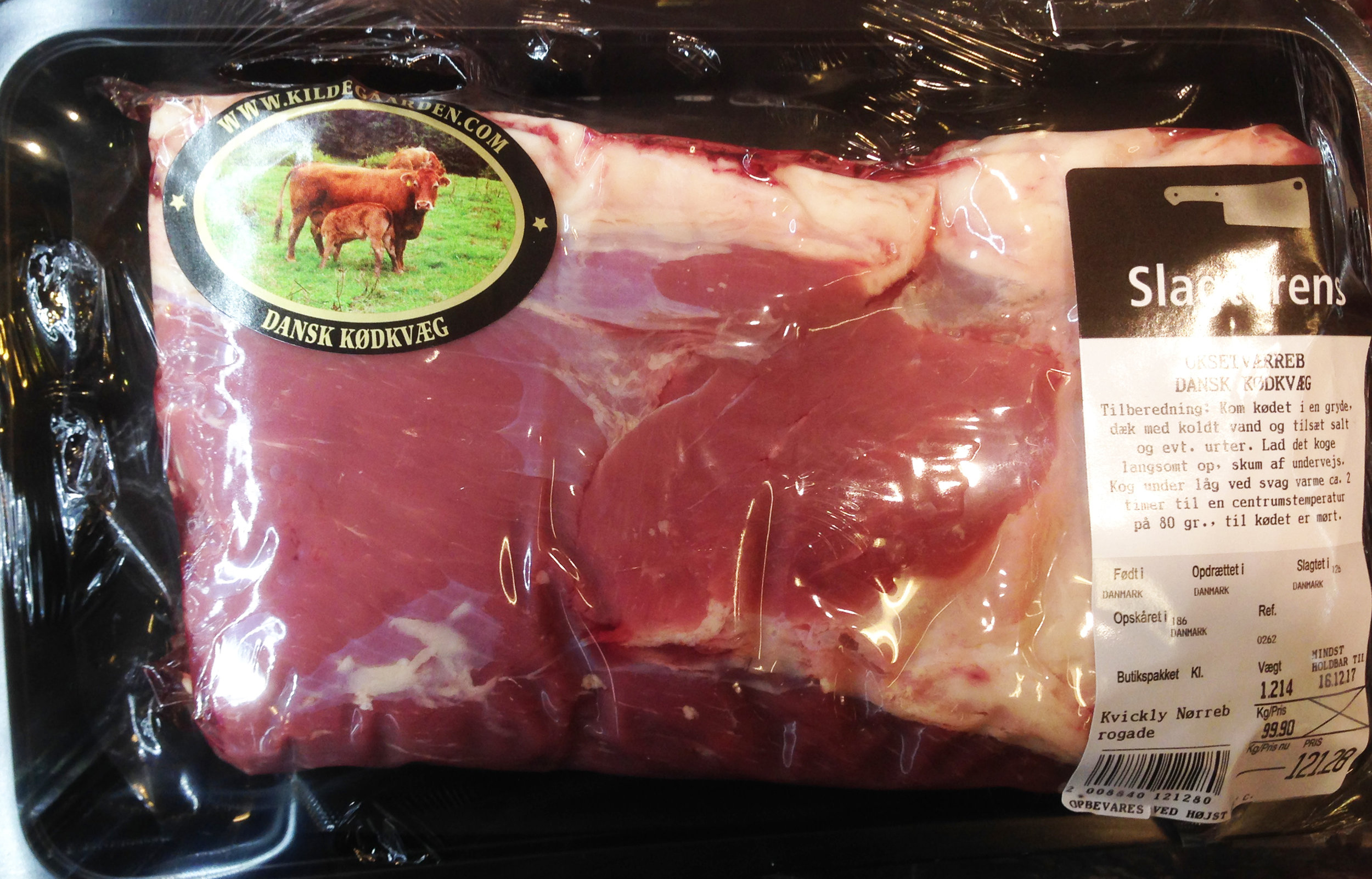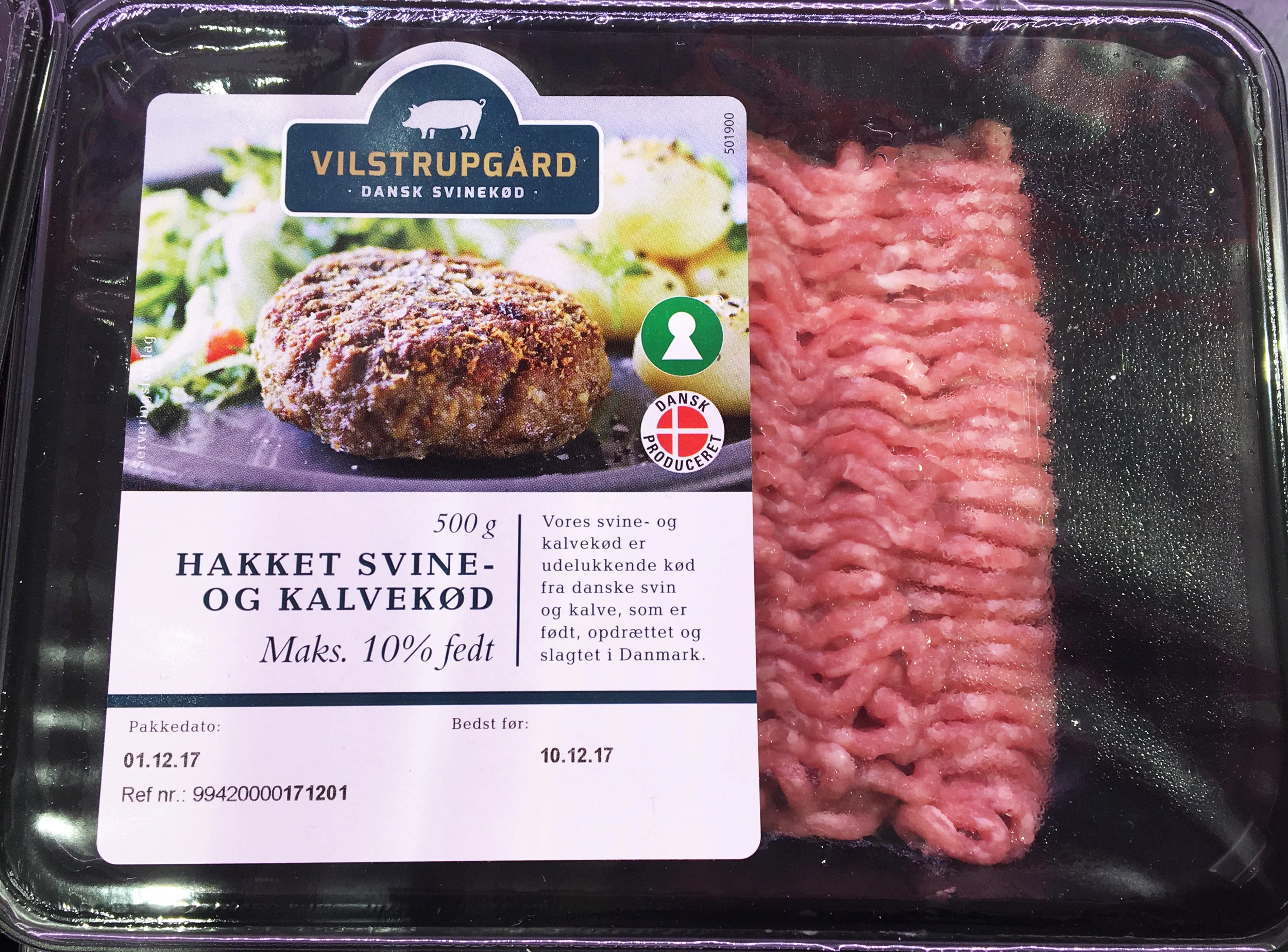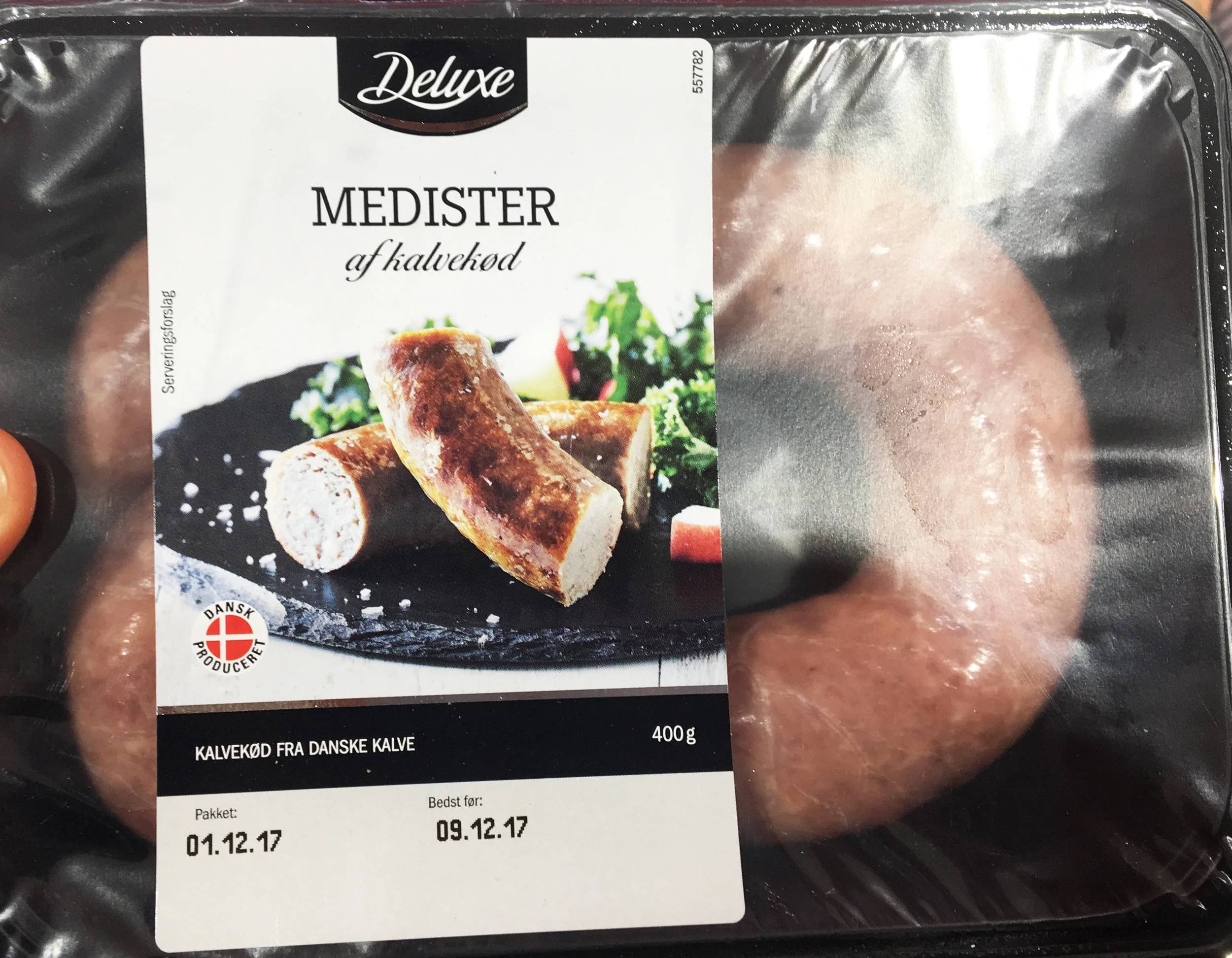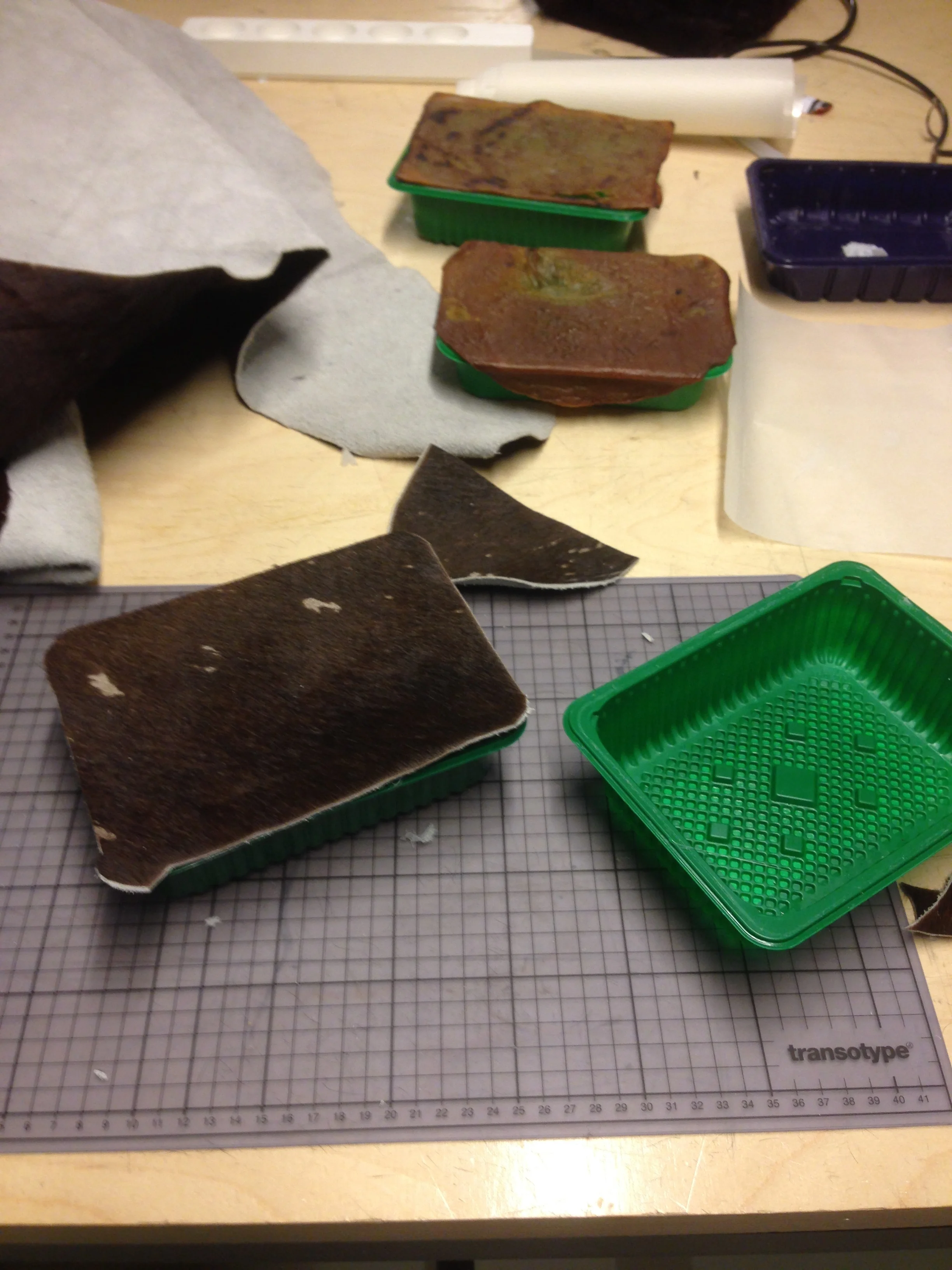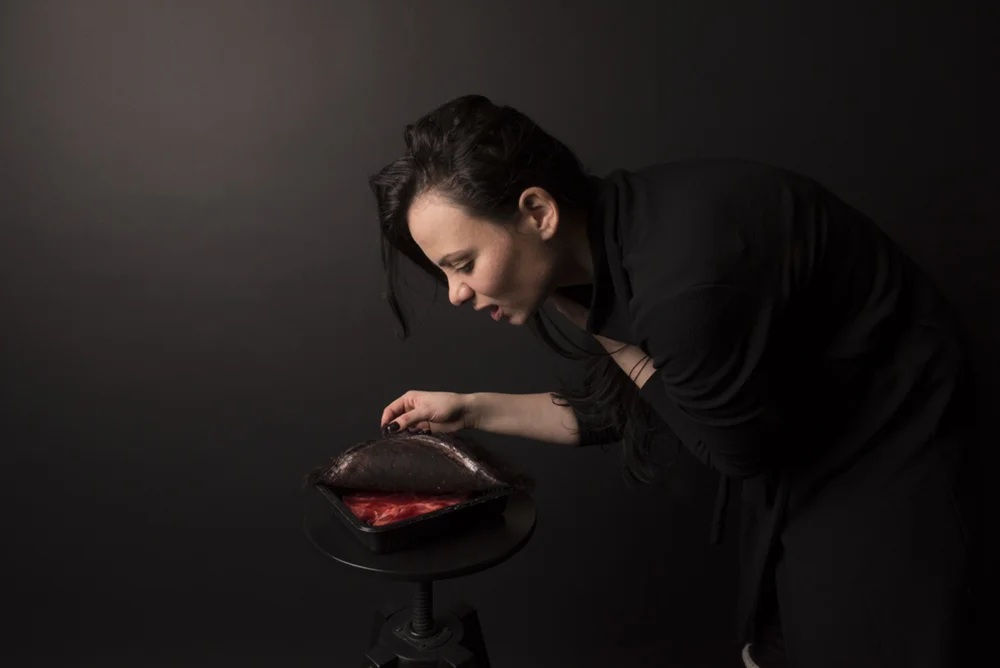NON-PACKAGING FOR MASS COMMUNICATION
A Critical Design Perspective & Prototyping For No-Meat-Eating2018 | KEA Copenhagen, BA in Communication Design & Media
“We have lost our sense of what it means to be human and our connection to other beings.”
Non-Packaging: A Critical Design Perspective & Prototyping is a project in which I explored how altering the materiality and presentation of meat packaging could impact consumer perception and emotional response. By covering packaged meat in fur, I aimed to create a visceral reaction—one that reconnects the product with its animal origin and challenges the detachment embedded in conventional supermarket packaging. To test my hypothesis, I used iMotions' facial expression analysis software to track participants' reactions to the artefact. The results confirmed my assumptions: expressions of disgust, discomfort, and hesitation emerged, demonstrating how material and presentation alone can influence consumer perception. This project highlights the power of design in shaping emotional and ethical engagement with food, encouraging critical reflection on consumption habits.
Meat Eating - A Wicked ProblemFor my BA project in Communication Design and Media I chose to tackle the problem of meat eating, and find ways how to use design thinking, methods and tools to communicate something that we forget too often in our industrialized, mechanized, and technologized world: meat is coming from living sentient beings. So, why is this a problem?
The United Nations has concluded that factory farming is one of the biggest contributors to the most serious environmental problems at every level, from local to global: land degradation, climate change, pollution, water shortages, and habitat destruction; meat consumption has been associated with almost all of the major diseases; and, equally alarming, billions of animals are killed yearly all over the globe, creating enormous suffering. Meat eating is a wicked problem, because is difficult, maybe impossible to solve due to incomplete or contradictory knowledge, the number of people and opinions involved, the large economic burden, and the interconnected nature of these problems with other problems. Meat eating is sustained by a complex system of beliefs that shape our values and behavior when it comes to our food choices. This is called Carnism, term coined by Dr. Melanie Joy, and it is the invisible belief system that conditions us to eat certain animals, and participate in a violent practice which many of us are not even aware of.
The aim of this project is to raise awareness, provoke debate, and make people think and reflect on their food choices and their relationship with other beings. The fundamental frame of thinking for this project is Critical Design, having the purpose to challenge assumptions and givens about the everyday objects. This project investigates how our perception about meat is influenced by certain design decisions that the meat industry is applying to its products, how psychological triggers and responses reveal these perceptions, and how critical design can challenge these assumptions and perceptions by simply making us think and question our reality. Through surveys, desk research, and scientific findings, is revealed that cognitive dissonance ( = anxiety that results from simultaneously holding contradictory or otherwise incompatible attitudes and beliefs - in this case, it justifies and enables people to eat meat, even though they are against violence and causing pain and suffering to animals) participates in keeping the willingness to eat meat, even though we have the palate of an herbivore, as Milton Mills argues in his lecture - Meat eating and the biology of disgust. Disgust and empathy are regulating agents which have the potential to reduce meat consumption, but they are reduced by the cognitive dissonance, by the way meat packages are displaying visual information. By the application of affect theories, phenomenological perspectives, the sense of touch, and semiotic interpretation, together with aesthetic strategies and product prototyping, I am proposing as solution in a critical design artifact, which by redesign and change of materiality, explores the potential of disgust and empathy to communicate that we are not, in fact, supposed to eat meat, and our body and emotions react accordingly.
Mindmap - visualisation of concepts and ideas, and their connection.
Meat Packages in SupermarketsI decided to research and explore the meat packaging as a communication product due to the fact that this is where we see and read information about the meat that we find in the supermarket - a space where decisions are made and where we as consumers impact the world. Frequently, the public participates as citizens arguing in very general terms about the ethical, moral, and social issues. Yet, when we act as consumers we often suspend these general beliefs and act on other impulses. So, let's see how visual communication design is applied on existing meat packages, and how certain imagery choices are influencing our perceptions in regards to the source and nature of the meat we find in the supermarkets.
The images above are displaying various meat packages that are using different kinds of images and graphics to communicate information about the meat. Some of the packages use illustrations to show the animal source of the meat; these are simplified depictions, that most of the time are used as indicators to show from what animal the meat is coming from, or to specify what part of the body is that distinct meat cut. By using illustrations (drawings), instead of photography, is a way to not reproduce everything; this way, the denotation of the drawing is less pure than that of a photograph, for there is no drawing without style. The style, in many cases, is carefully designed and crafted to persuade consumers to associate the meat product with quality, craftsmanship, technique, tradition, pleasure and taste, indicating “delicacy”, touching on the sensuous nature of meat eating.
The cases where the photography is used, either to represent a specific animal as the source of meat, or to reproduce a farm scene, the accent is put on the idealized image (a “happy” cow on a grass field under the blue sky), making reference to what Dr. Joy defines as compassionate carnism - a category of neocarnsim (characterized as anti-veganism). Compassionate carnism is a defense mechanism of carnism, which invented the concepts of “humane” or “happy” animal products, recommending moderation in meat consumption, to encourage people to keep consuming meat, this way reducing guilt and concerns about animal welfare.
In other instances, the package is displaying images of the cooked meat as a plated dish. This choice of imagery is proven to work efficiently to increase cognitive dissonance, appealing to people’s tastes and sensuous nature when it comes to food choices, making people more willing to consume meat.
Design Process and PrototypingHow can packaging design raise awareness, remind people that meat is coming from a living sentient being, and persuade them to eat less/no meat, by involving other senses when interacting with the meat packaging?
Having this question in mind, I employed various design methods and communication theories to research and define my design concept. Being a wicked problem I decided to use Critical Design (as opposed to Affirmative Design) as the fundamental approach to my perspective, analysis and solution. From surveys and research studies, to aesthetic strategies and philosophical thinking, to practical and material testing for the prototyping phase, I conceived the Critical Design Artifact by redesigning the meat packaging to communicate the link between animal and meat.
The research and the analysis led me to reconceive the meat packaging as an instrument of communication. Because critical design needs to be made physical, and the physical presence of the artifact can engage our senses through phenomenological detection, I decided to change the materiality of the packaging, setting the scene for a tactile experience. Therefore, I redesigned the meat packaging, by using fur to cover the meat trays, inviting the presence of the animal in the interaction between the subject and the object. This way, I intend to appeal to people’s sense of touch and emotional memory, to remind them that meat is coming from an animal, and create empathy. I decided to keep the existing shape of the package, so people relate easier with what they are used to, and to have an impact afterwards, when they will see the real package in the supermarket.
Non-Packaging - A Critical Design Perspective & Prototyping for No-Meat-Eating
This object is a critical design artifact and its main purpose is to engage people to think about the fact that meat is coming from an animal, to involve the affect as a communication instrument, provoking disgust (physical and moral), and leading to reflection on our nature, our practices and habits around meat eating. The context for this object to be experienced is an unconventional testing environment, where the aim is to research through design, and practically showing what is supported by the scientific data, in accordance with the social and ideological studies: that we are disgusted by meat, but we are conditioned to eat it due to the cognitive dissonance.
Testing the ConceptUser Testing and Interaction with the Packaging Prototype
Being interested in human behavior and perceptions when it comes to design decisions, I found it relevant to explore how the emotional value of design could influence us. In order to test my design concept, I also used the facial analysis software from iMotions to analyse poeple's facial expressions when they see a video of the packaging prototype. According to Silvan Tomkins, whose theory I used to define my design concept, affect is what motivates us, making things urgent. Affects are the biological responses that attach meaning to the stimuli encountered from moment to moment, being the origin of the experience of good and bad, telling us what to pay attention to. There are nine affects, each containing its own unique experiential signature, each attaching a specific type of meaning to information as it is taken in, stored and recalled. Each of the nine, innate affects has a characteristic feeling, facial display, and body experience. Tomkins played a critical role in the emergence of research on the face and facial expressions, and placed his observations in a coherent framework of affect and emotion. In so doing, he made it possible for observed facial behavior to yield an enormous amount of information.
By using the facial expressions analysis, I could gather information about how people react when seeing the interaction with the prototype I designed, and what kind of feelings they display. Going from joy at first (when they see the hand touching the fur), to surprise when the packaging is opened, to sadness, anger and disgust at times, the respondents displayed various emotions. This experiment is useful in terms of emotional authenticity, speed of reaction, and revealing inner cognition and affect when it comes to recreating the link between animal and meat. The aim of the test was also to verify the assumption that people are naturally disgusted and disturbed by the idea of meat coming from animals; another purpose of the facial analysis was to be used as research method to support the theory that we are herbivores by nature, that we are not comfortable seeing what resembles an animal "being skinned", and moreover, the test works also on the affective resonance characteristic, which refers to a person’s tendency to resonate and experience the same affect in response to viewing a display of that affect by another person, considered to be the original basis for all human communication. So, by seeing the natural reactions and understanding what those are with the use of the software, the audience can resonate and receive the message that meat is the result of suffering, and as humans we are against it.
And here are some of the facial expression tests that reveal what people feel (or more accurately, what emotions people display on their faces) when they watch the video of the interaction - touching and opening the prototype package:
For each tester I chose the relevant values in terms of Facial Expression and associated Emotion, to showcase the different perceptions and reactions when watching the video of the prototype.
Concept Testing - Facial Expressions Analysis + video timeline
Tester 1
Tester 6
Tester 8
A short review by Dr. Francesca Zampollo, whose Food design Diagram I used to categorize the concept of the project.
Conclusion (or... some food for thought)Design can help raise awareness of the consequences of our actions as citizen-consumers. By presenting people with a critical design product, which is improbable, but charged with sublime aesthetic experience, semiotic value, and emotional function, people can engage critically with it as citizen-consumers. Being faced with a complex mix of contradictory emotions and responses opens up new perspectives on the debate about meat eating. In a consumer society like ours, it is through buying goods that reality takes shape. Not just physical reality or cultural, but psychological, ethical, and behavioral. One of the purposes of the critical design artifact I am proposing is to help us become more discerning consumers, to encourage people to demand more from the industry and society as critical consumers.
As Dr. Joy says, “awareness is the greatest threat to carnism, because with awareness, we can make choices that reflect what we authentically think and feel, rather than what we have been taught to think and feel. Without awareness there is no free choice.” The opposite to carnism is veganism, the fastest growing social justice movements in the world today, due to the demand of democratization and transparency in food production, and the psychological and ethical dimensions of this ideology. This is the ultimate solution to the problem of meat eating, and for a better world we need to understand that our tastes and habits need to change.
“The greatness of a nation and its moral progress can be judged by the way its animals are treated.”



